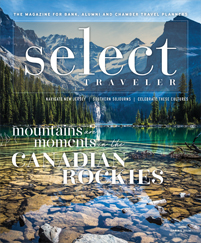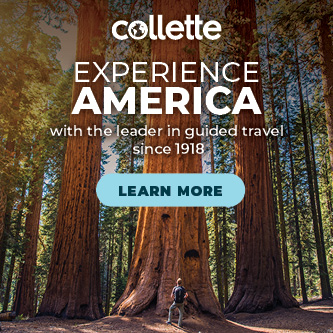Adventure travel means something different to everyone, but it doesn’t have to mean bungee jumping, skydiving and other extreme sports. It can mean patiently casting a fly to entice a bass, watching the sun set over the Montana mountains or walking in the footsteps of the ancient Pueblo people at the bottom of the Grand Canyon. It can mean a journey to a new place, an exploration of a new activity or a new discovery about yourself.
Grand Canyon Whitewater
Flagstaff, Arizona
Many people have visited the Grand Canyon, and they probably think, “Been there, seen that.” But there’s an entirely different side of the canyon that most have never seen: the bottom.
Sarah Owen of Grand Canyon Whitewater is an Arizona native who had been to the Grand Canyon countless times — or, at least, the top of it. The first time she had the opportunity to raft the Colorado River that carves through the bottom of the canyon, “it was a completely different perspective.”
“You think you know this place, then you get down there, and you’re seeing this place from its heart,” Owen said. “You feel like you’re a part of it. You’re engulfed in it, wrapped up in it.”
Grand Canyon Whitewater runs both motorized and oar-powered trips on the river, the shortest of which is a four-day motorized trip; the longest is a 15-day oar float. The company can take groups of up to 28 people on motorized trips and 24 people on oar trips, Owen said. The motorized trips are generally more popular for groups because each oar boat holds only four or five people, compared with 14 people per motorized boat, which offers groups more opportunities to socialize during the ride, she said.
No matter what kind of boat or how long the trip, every day on the river includes at least one hike to “places you wouldn’t imagine exist in the Grand Canyon,” Owen said. Hikes showcase waterfalls, wildlife, rock formations, ancient ruins and petroglyphs.
Grand Canyon Whitewater provides all the camping and rafting gear as well as meals, but the experience is a far cry from most camping trips. Whether it’s a corporate retreat, a bachelor party or a family reunion, “it’s neat to see the canyon take hold,” Owen said. People who enter the canyon as strangers or near-strangers leave as close friends.
“A lot of our passengers have never camped before at all, so to come down here — you have no cell phone, no Internet — it’s really an empowering experience for a lot of people,” Owen said. “People come away realizing they’re capable of so much more than they thought.”
Mossy Creek Fly Fishing
Harrisonburg, Virginia
When twin brothers Brian and Colby Trow started Mossy Creek Fly Fishing in 2003, they were young men with nothing to lose and nothing to fear.
“We figured if we crashed and burned, we could just start over,” Brian Trow said.
But they didn’t. Eleven years later, Mossy Creek is the largest guide service in the state of Virginia, he said, and has about a dozen guides who teach casting classes and lead fly-fishing trips to local public and private creeks, streams and rivers.
Mossy Creek offers a range of options for groups, from two-hour classes to daylong trips. The most popular group option tends to be the half-day beginner class that teaches up to 40 students about tackle, knots and casting techniques and culminates with fly-fishing on the water. The company also offers a two-hour casting clinic that provides one hour of learning how to fly cast and one hour of actual fishing.
The classes tend to be more popular for groups because they get to be together and are great for all ages and ability levels. But Mossy Creek also offers guided trout trips for about 15 people and guided muskie or bass float trips for groups of about 14 anglers. The company can also split up groups of mixed abilities; some guides will have a class with the beginners while other guides take the anglers fishing.
“The beginner classes and casting clinics, people are very much all together; it’s more of a group setting,” Trow said. “Trout and float trips are more on your own. By nature of being in the boat, you shove off, you might see one another during the day, then convene for lunch so everyone can tell their lies and fish stories.”
By its very nature, fly-fishing is a mental challenge, and it’s a challenge that’s different every time, he said.
“There’s just as much mental strategy that goes into fly-fishing as technique,” Trow said. “It can be as quiet and calm as sitting on the bank of a trout stream and watching fish rise, or it can be as exciting as being in a raft and going down Class 2 rapids and trying to hook into a big muskie, which is an epic adventure. It can take you to the end of the world. It’s a never-ending quest.”









